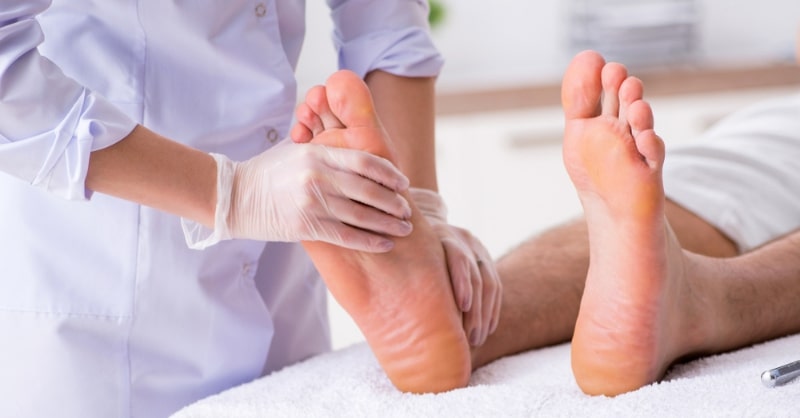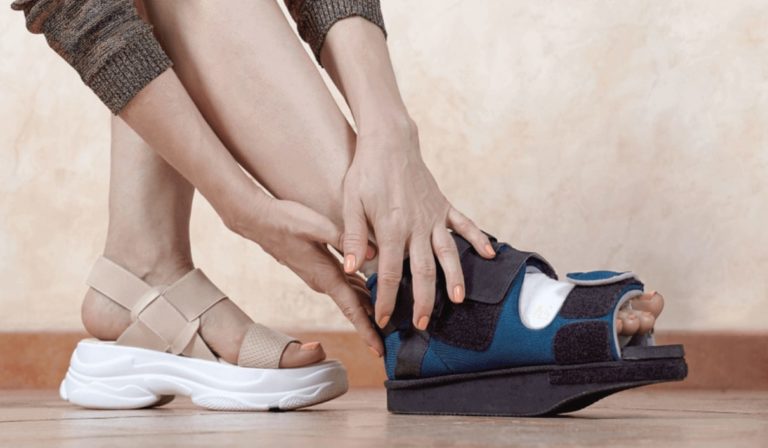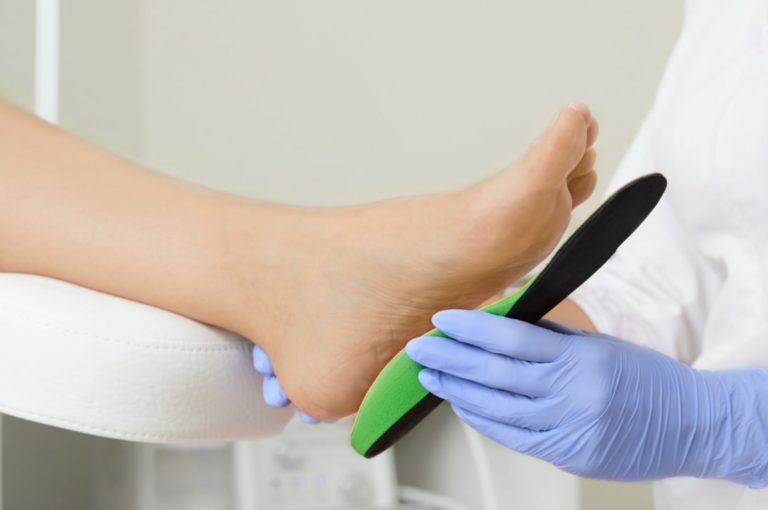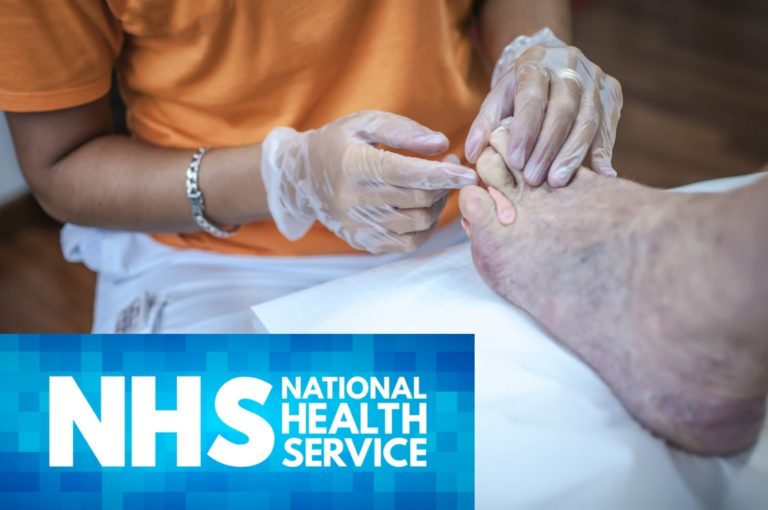In the UK, a podiatrist is often known as a chiropodist, and this can cause some confusion. If you have the same confusion then, worry no more! We are here to clear out all the confusion on “What is the difference between a chiropodist and a podiatrist?”. Also, read on to find out what is podiatry and chiropody.
What is Chiropody and Podiatry?
Chiropody and podiatry is a branch of medicine. It is dedicated to the study, diagnosis, and medical or surgical treatment of ankle, foot, and lower limb disorders. Later on, The term podiatry came into use instead of chiropody in the early 20th century in the United States and is now used worldwide. Countries like the United Kingdom, Australia, and Canada also use the name podiatry.
Similarly, Podiatry is practiced as a speciality in many countries. Although, in many English-speaking countries, some clinicians may use the older title the chiropodist.
Here is our guide, to begin with, understand what is the difference between podiatry and chiropody.
What’s The Difference Between a Chiropodist and a Podiatrist?
Chiropodist and podiatrist, what is the difference? Actually, there is no distinction between these two. Basically, podiatry is the modern-day medical name, whereas chiropody is the pre-existing name for the same profession.
Later on, the United Kingdom, in 1993, changed the name into podiatry. Today, podiatry is the internationally recognized name for this. The difference between the names is territorial. In the UK and Ireland, foot specialists address as Chiropodist. Podiatrist describes in the United States and is more internationally recognized.
Afterward, in 1993, the UK and Ireland officially launched the term and now use the two interchangeably.
Chiropodists and podiatrists don’t have any qualifications and experience differentiate. Therefore, podiatrists and chiropodists are both medical professionals. As a result, they both specialized in treating lower limb or severe foot issues.
NB: Nonetheless, they are not doctors, though.
However, generally speaking, you should ensure that your podiatrist is registered with the Health and Care Professions Council (HCPC). And also, make sure that he/she is a member of the College of Podiatry. If not, then some other licensed body, such as The British Chiropody & Podiatry Association.
What Does a Chiropodist Do?
Chiropodists are trained healthcare professionals. They diagnose and treat abnormal conditions of the feet and lower legs. Including preventing and correcting deformation. Also, keep people mobile and active, ease pain, and treat infections.
First, the podiatrist will take a complete medical history and carry out basic tests at your consultation. Next, they will be checking the blood circulation and feeling in your feet.
Meanwhile, they may also examine and look at the way you walk and move the joints of your lower legs. Lastly, they will discuss your concerns with you and make a diagnosis and treatment plan for you.
In fact, any lesser problems, including the removal of hard skin, corns, and calluses, can be treated typically on the first consultation. The session is not only completely painless but also quite pleasant and takes up to 30 to 60 minutes.
1. Conservative Care

Conservative care that podiatry and chiropody provide includes the following:
- Problematic toenails (inclusive of ingrown toenails, damaged and fungal nails)
- Callus and corns
- Skin fissuring such as cracked heels
- Athletes foot and other dermatological complaints
- Verrucae
- Blisters and shearing stress or tissue damage
2. Corrective Management
Corrective management care that podiatry and chiropody provide includes the following:
- Flat feet
- High arches
- Joint and muscular or other sport-related injuries
- Heel pain
- Shin pain
- Bunions

In addition, they are also adept at dealing with smelly feet and other sports injuries. Equally, chiropodists can provide a detailed assessment of how you walk or run and whether this impacts your feet or lower limbs.
They can also provide orthotics. Orthotics are shoe padding, insoles, exercises, acupuncture, and general advice on the best footwear. Besides, they can give you advice on how to take care of your feet and the best types of shoes for your feet.

The bottom line is, there is a significant connection between any minor or severe foot problems and the podiatrist. That is why to call your podiatry and chiropody doctor instantly if you cannot walk or can’t put weight on your foot.
How Much Does a Visit Cost?
For a professional podiatrist, how much does a visit cost? Although, visit costs can depend on where you live and the types of treatment you are looking for. Below we present you a basic estimation of podiatry visit or treatment cost.
| Name of Treatment | Cost |
| New Patient Consultation & Treatment | £50 |
| Podiatry/ Chiropody regular appointment | £40 |
| Extended Appointment (up to 40 mins) | £60 |
| Simple Nail Care, regular nail cutting (in case you have difficulty) | £30 |
| Single Issue Short Treatment. For example, corn (10 minutes) | £30 |
| Initial biomechanical Consultation *bring shorts and shoes. | £75 |
| Plantar fasciitis, heel pain, Achilles tendinitis, or similar assessment and treatment. It may combine MLS laser treatment. | £75 |
| Course of 6 MLS laser treatments | £180-£240 |
| Fungal Laser Treatment (FLT) with Lunula or PinPointe Lasers. The course of treatment includes 6-10 sessions treatment minimum over 6 months (included in the fee) | £300 per foot |
| Custom Made Casted Orthoses (average cost) + assessment | £250-£400 |
| Non-Custom Orthoses | From £65 |
| Home Visit (Domiciliary) | £60 |
| Pedique Cosmetic Toenail Replacement for damaged nails | From £50 (1 big nail) to £80 (2 big nails) |
Surgery for Ingrown Toenail (Partial Nail removal) This is for tenacious cases where a regular chiropody treatment has failed to fix the issue. Insurance will cover the expense of this minor surgery | From £295 one toe £395 both big toes (self-pay charge) |
| Blood Flow check to feet (ABPI) + Diabetic Assessment + Static Foot Pressure Analysis | £60 |
| Letter writing or reports to GP about the diabetic assessment or for investigations. They are generally included within the consultation fee (per 15 mins) | £26 |
| Foot Massage with or without hot stones for 40 mins | £60 |
N: B- Of course, the following price range is only for average estimation.
Podiatry on The NHS
You are maybe asking yourself, “can I get podiatry in NHS or not!” Well, you could be.

Since April 1, 2013, clinical commissioning groups (CCGs) have the power to decide what foot care services to offer for their local area. According to the recommendation of the National Institute for Health and Care Excellence (NICE), foot care services related to long-term conditions are available on the NHS such as-
However, there is no such NICE guidance for foot health provision that is not incorporated with a long-term condition.
As a result, each individual Clinical Commissioning Groups (CCG) will decide what to make available on the NHS. They will decide it depending on local people’s needs.
For instance, suppose your condition isn’t effective to your health or mobility, such as a verruca. If your verruca doesn’t hurt when you walk but quite ugly to look at, you’re more likely to be eligible for NHS podiatry and chiropody.
With this in mind, contact your local GP to check if you qualify for NHS podiatry treatment or not. Find your local CCG.
Frequently Asked Questions (FAQs)
1. Is a podiatrist considered a physician?
This question also has controversies. In the UK, a podiatrist does not consider a physician nor a doctor. Their education and training are quite different from that of a medical doctor.
However, in the United States, the Federal Government considers podiatrists as physicians. So, they are uniquely qualified among medical professionals. They are qualified to treat the lower extremity based on their education, training, and expertise.
2. How much does private podiatry cost, and where can I find them?
Actually, the fees of private podiatry and chiropody treatment can vary. It is depended on the place you live and the podiatrist’s experience.
And whenever you wish to have private treatment, you have to visit a local clinic. In that case, ring a few local podiatry clinics to check their prices.
Here are some resources for you –
- Find a local podiatrist.
- Find your local CCG.
- Is podiatry free on the NHS?
It might be.
Podiatry may be available to you free of charge on the NHS. Although, this totally depends on your local Clinical Commissioning Group (CCG). Each case comes up with a different assessment. Whether you are eligible to get free treatment or not depends on how severe your condition is and the risk factors with it.
If you find that free NHS treatment is not available for you, you can visit a local clinic for private treatment, which will cost you accordingly. Find a local podiatrist.
3. Which insoles do podiatrists recommend?
In podiatry and chiropody science, different people’s feet, their activities, and shoes require different materials. Some insoles might work for you, but they might not work for others. To dictate which material is best for you, consider your feet shape, your medical history, and end-use before purchasing.
Here are some tips from professional podiatrists to have the most suitable pair for you:
♦ High arches – For high arches, the best pair of shoes is the one that has a softer insole made of gels or foam.
♦ Bunions – For bunions, to give your forefoot more space, look for 3/4 length insoles.
♦ Flat feet – For flat feet, shop for a structured insole made by neoprene or EVA.
♦ Plantar fasciitis & heel spurs – Plantar fasciitis and/or heel spurs? Look for a cupped heel and arch support insole.
♦ Metatarsalgia – The best choice for metatarsalgia, will be a full-length insole with lots of gel cushioning in the forefoot.
4. What’s the difference between a chiropodist and a podiatrist?
Chiropodists and podiatrists are essentially the same, focusing on foot care and treatment, with podiatry being the more commonly used term nowadays. They diagnose, treat, and provide preventive care for various foot problems.
5. What is the average cost of a chiropodist?
Chiropodist appointments typically range from £30 to £60 on average, but prices can vary based on location, services, and chiropodist experience.
6. What is the difference between a chiropodist and a podiatrist?
Chiropodists and podiatrists are foot care experts, but with different scopes. Chiropodists focus on treating foot conditions and minor surgeries, while podiatrists cover a wider range including preventive care and advanced treatments.
Conclusion
Podiatrists make a huge difference to millions of patients every year, after all. Every year, they do it by keeping the UK population active and mobile, as shown above. In addition, a podiatrist is one of the most family-friendly careers out there.
Also, many podiatrists work privately, either within existing clinics or practices. On the other hand, they can run their own business as well. Indeed, it is a great career to combine with childcare as you can keep the hours you need but still make a comfortable living.
Lastly, how does it feel to be a podiatrist? By podiatry and chiropody, eventually you will improve people’s standard of life. Consequently, you will do it by preventing and correcting deformities. To conclude, you can reduce the impact of their condition by relieving pain, treating infections, and keeping people mobile and active. Thus, it is quite a necessary and helpful profession.
Recent posts
- What are Functional Skills? From Theory to Practice
- How Old Must You Be to Buy Paracetamol
- What is the Modal in Maths? Mode, Modal, and Mean Explained
- How to Support People with Learning Disabilities?
- How to Be a Primary Teacher: Best Practices and Insights
- 21 Duties of a Health & Safety Officer You Must Know
- Collaborating with SENCOs: Best Practices for Teachers
- Top 6 Online Courses to Improve Your English Writing Skills
- Can You Reheat Chicken? Tips for Safe and Delicious Leftovers
- How to Set a Table: From Basic to Elegance







 July 01, 2023
July 01, 2023
















